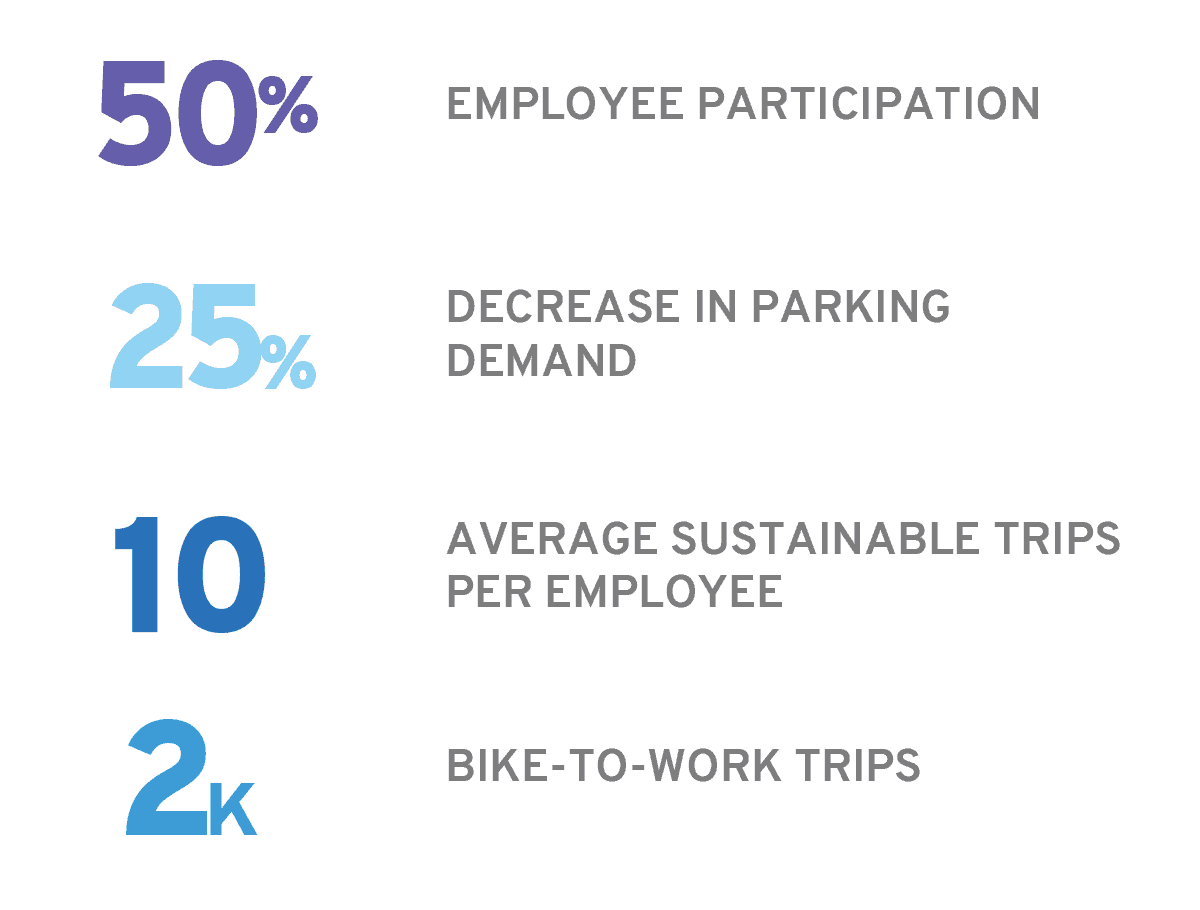
As wireless home sound system maker Sonos was growing, so was the number of employees driving to its headquarters each day in downtown Santa Barbara. As part of a strong commitment to reducing environmental impact, Sonos wanted to encourage employees to try alternatives to driving alone. In 2015 it partnered with the Santa Barbara County Association of Governments (SBCAG) to launch an innovative transportation demand management (TDM) strategy.
The Strategy
Sonos elected to implement a parking cash-out strategy because it is the single most effective way to shift commuters away from driving alone and parking. Before designing the program, the company conducted a survey to identify what kinds of interventions would resonate most strongly with its commuters. What they learned was that employees valued having flexibility, and that they would respond favorably to a policy that allowed them to keep the option to park sometimes if they needed to. To make a program work for Sonos employees, the company needed to offer choices.
Analysis also revealed that many employees lived close enough to work to make biking an attractive alternative to driving every day. They just needed a powerful nudge.
The Results
The new program attracted a lot of attention. Even within the first month, employees were participating at impressive levels and demand for parking spaces had decreased noticeably. Because the company no longer needed to pay for offsite parking, Sonos saved $20,880 on monthly parking costs. Sonos received an official Green Business certification from Santa Barbara County in 2016.
How They Did It
On top of its regular transit subsidies, Sonos introduced two new parking cash-out programs in parallel on the SBCAG SmartRide platform, powered by RideAmigos. The “Fast Cash” category was for employees that agreed to give up their parking permits completely and log trips in exchange for either a a 30-day transit pass, a free bike, or five dollars per day. Another “Flexible” category was aimed at employees that wanted flexibility to park sometimes and could log trips in exchange for a 10-trip transit card, a free bike, or two dollars each day they didn’t drive to work.
Why It Works
Parking cash-out programs leverage the same feelings associated with paying for parking while still supporting it as an employee benefit. Daily cash-out options give employees flexibility to make daily decisions about how to get to work, while a monthly or quarterly cash-out structure plays to the concept of loss aversion by putting money in employees hands and letting them choose how to spend it. This results in employees reconsidering alternatives to parking to potentially retain some of those extra funds.
Programs that offer both options are especially effective because they appeal to employees who are willing to totally commit to an alternative mode, and those who prefer to keep options open for days they might like to have a car.
About Sonos
Sonos (Nasdaq: SONO) is one of the world’s leading sound experience brands. As the inventor of multi-room wireless home audio, Sonos innovation helps the world listen better by giving people access to the content they love and allowing them to control it however they choose. Known for delivering an unparalleled sound experience, thoughtful home design aesthetic, simplicity of use and an open platform, Sonos makes the breadth of audio content available to anyone. Sonos is headquartered in Santa Barbara, California. Visit sonos.com.
Learn More
RideAmigos is proud to partner with Santa Barbara County Association of Governments and Sonos to power successful employee commuter programs like this one. If you’d like to learn more about replicating results like these, get started today by talking to us about your commuter programs and goals.

